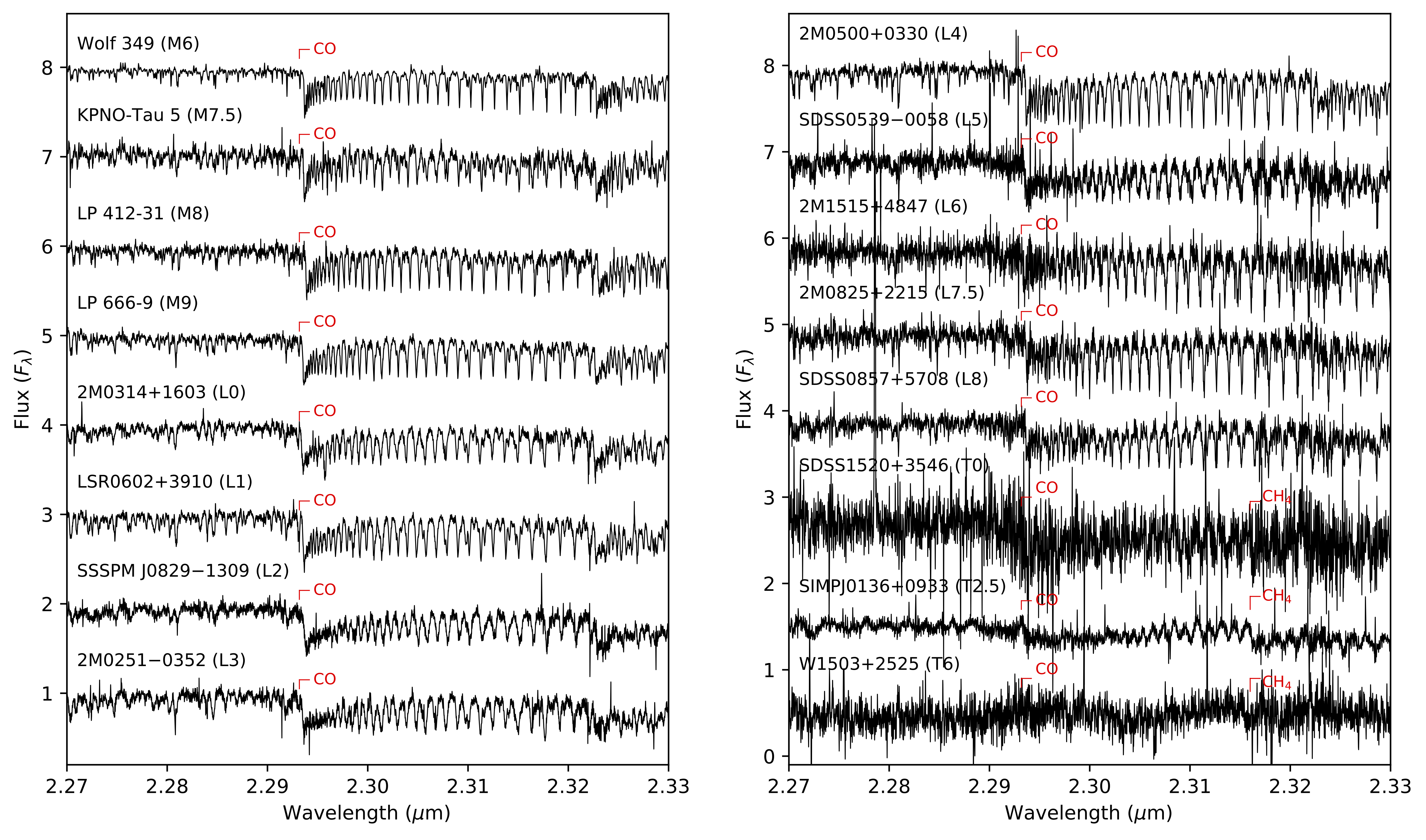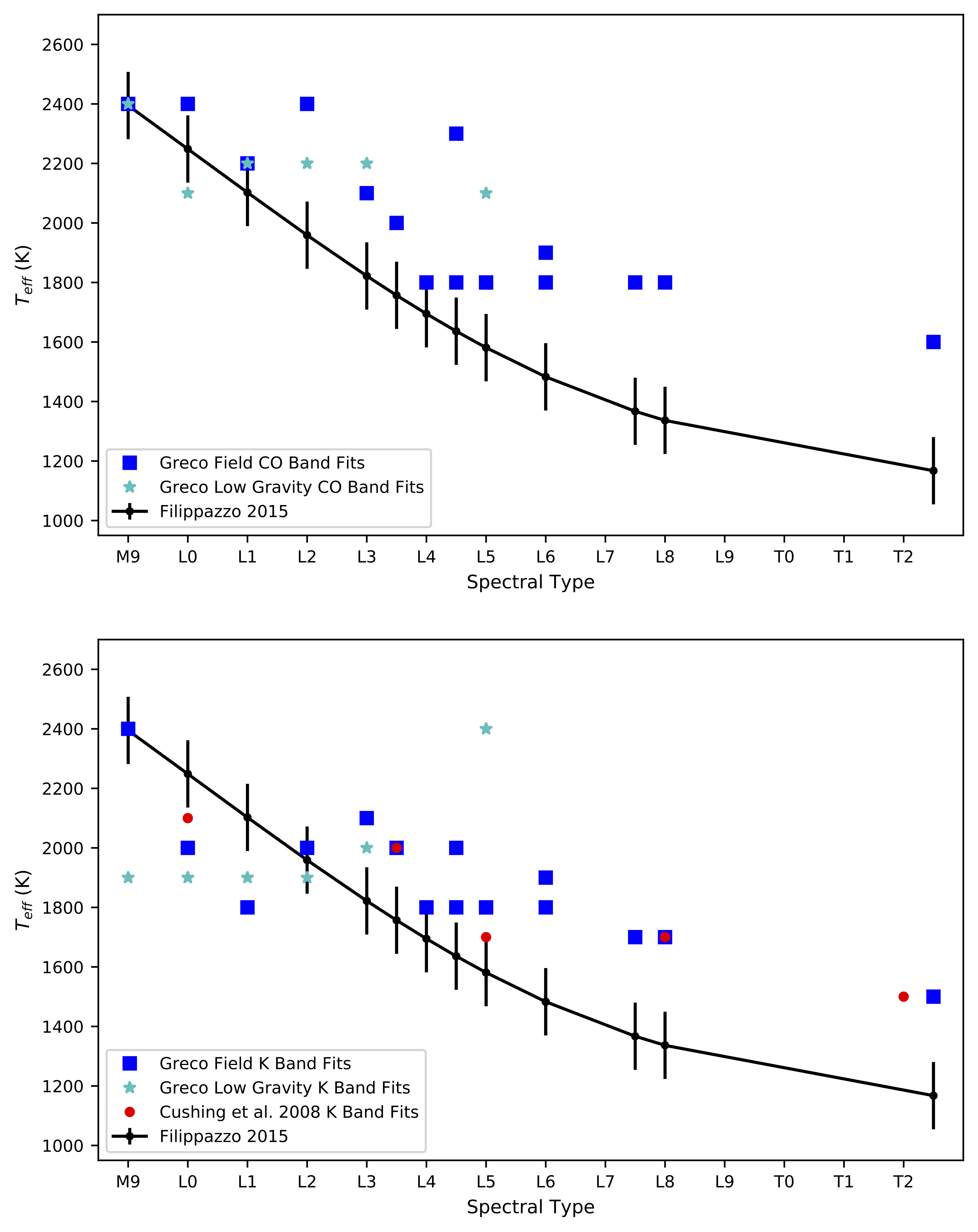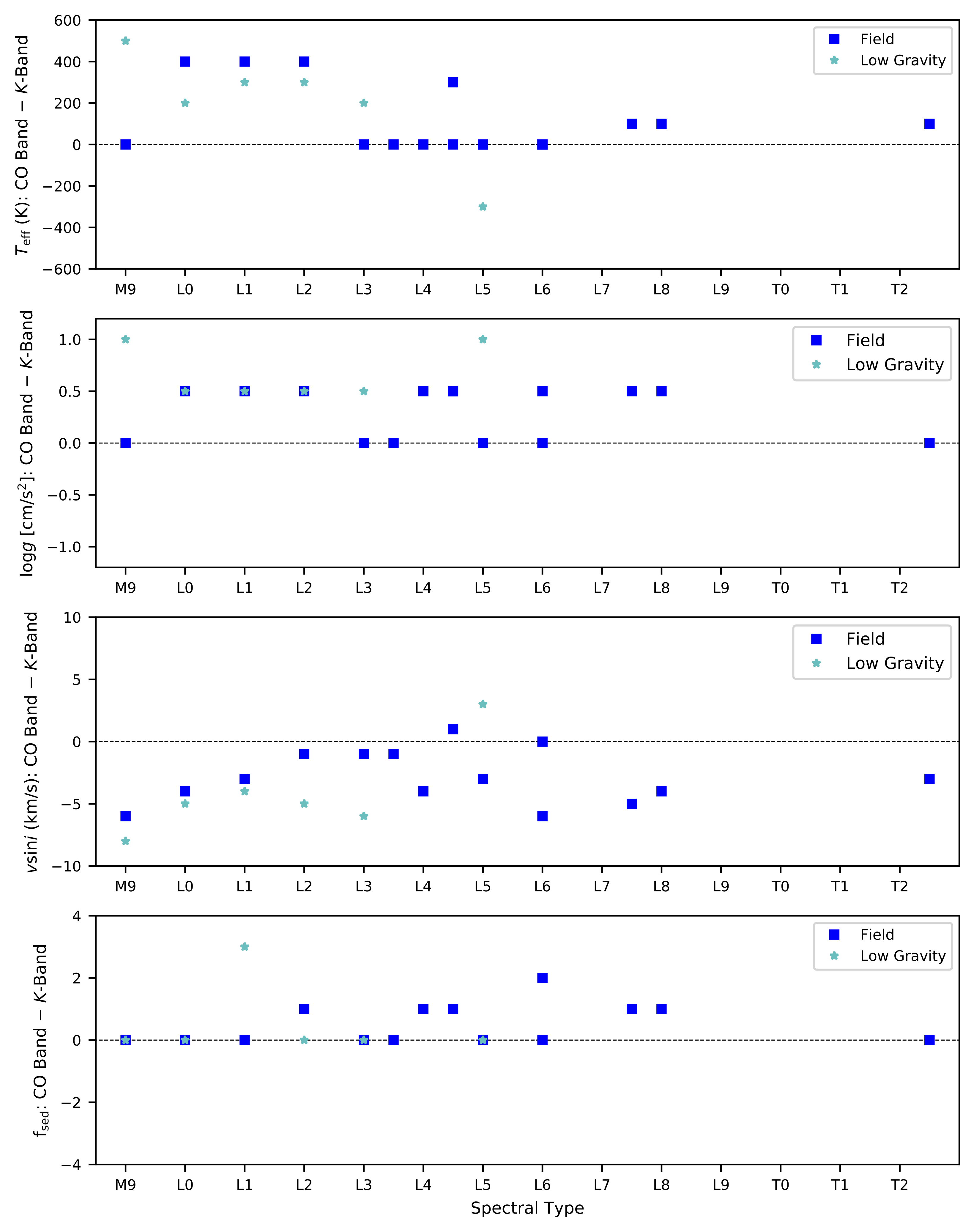A High Resolution H- and K-Band Spectroscopic Sequence of Ultracool Dwarfs
Jennifer J. Greco1,2,3, Michael C. Cushing3
1. Uppsala University, 2. Swedish Collegium for Advanced Study, 3. University of Toledo
Poster presented at Cool Stars 20.5
Pdf version of this poster available here
High-Resolution Spectroscopic Sequence

Ultracool dwarfs have been studied extensively using photometry and low- and moderate-resolution spectroscopy, but rarely using high-resolution spectroscopy.
We have assembled the first high-resolution H- and K-band spectroscopic sequence of ultracool dwarfs. Our sample contains 31 objects with spectral types ranging from M1.5V to T6, and also contains low-gravity objects at five spectral types (M9, L0, L1, L2, L3, L5).
All spectra were obtained using the Immersion GRating INfrared Spectrometer (IGRINS) on the 4.3 meter Lowell Discovery Telescope (LDT) at a resolving power of R~45,000.
Here we show a selection of our objects, with spectral types ranging from M6V to T6, plotted between 2.27 and 2.33 μm.
Comparing Our Spectra with Model Atmospheres

We compared 22 of our objects to synthetic spectra created from the atmospheric models of Saumon and Marley (2008).
We fit both the whole K-band (2.05-2.35μm) and the CO band (2.27-2.35μm), to obtain estimates of Teff, surface gravity, vsini, and fsed for each of our objects.
This figure shows a selection of objects (black), plotted against the best fitting synthetic spectrum for each object from the CO band fits (cyan). Each is labeled with the name of the object and the Teff, surface gravity, vsini, and fsed of the best fitting model.
Results of Model Fitting
Effective Temperature (Teff)
- Our Teff values are high When compared with temperatures obtained from bolometric luminosities (Filippazzo et al. 2015).
- Our results agree with those obtained by Cushing et al. (2008) using the same models at moderate resolution.
|
Clouds (fsed)
- Most of our fsed values are consistent with the cloudiness we expect to see in L dwarfs.
- We see some evidence of an increase in fsed around the L/T transition, as expected as clouds thin.
|
Rotational Velocity (vsini)
- We find most of our vsini values fall within
the range expected from previous studies (15 km/s ≤ vsini ⋚ 40 km/s).
- Eleven of our objects have vsini values previously published in work done by
Zapatero Osorio et al. (2006) and
Blake et al. (2010).
We find that our vsini values are from both the K-band and CO band are high
when compared to theirs.
We are still investigating the reason for this.
- compare to Cushing et al 2008
|
Surface Gravity (logg)
- We have low-gravity objects at six spectral types (M9, L0, L1, L2, L3, L5), we compared the surface gravities returned for those objects
to those for field objects of the same spectral type
- We return lower surface gravities for two of our low-gravity objects in the CO band, and all of our low-gravity objects in the K-band.
|
Effective Temperature (Teff)
 Teff values for each of our objects plotted
as a function of spectral type. The top panel shows the results of the CO band fits,
and the bottom shows the results of the fits of the entire K-band. The blue squares show the field objects, and the lighter blue stars show the low-gravity sequence.
Plotted in black is the Teff- spectral type relation of Filippazzo et al. (2015),
calculated using bolometric luminosities. The red circles in the lower panel show the results
of K-band fits performed at moderate resolution using these models by Cushing et al. (2008).
We find that our Teff values are high compared to those calculated using bolometric luminosities by
Filippazzo et al. (2015), and are in good agreement with those obtained using these models by
Cushing et al. (2008).
|
Comparison of K-Band and CO Band Fits

Here we show the differences between the values returned by our CO band fits and our fits of the entire K-band for
each of our parameters. The top panel shows Teff, the second panel shows logg, the third panel shows vsini,
and the fourth panel shows fsed (calculated assuming that fsed = 5 when fsed = nc).
In each plot the blue squares show the field objects and the lighter blue stars the low gravity objects. A dashed line shows the zero point.
We notice systematic differences in the values returned for each of our parameters between the two sets of fits. For Teff, logg,
and fsed, the values returned by the CO band fits are greater than or equal to those returned by the K-band fits. For vsini,
the values returned by the K-band are greater than or equal to those returned by the CO band. The reason for this is still being investigated.
|



